After smoking meat for a few decades, here are some ideas for the easiest possible smoked (cooked aka hot smoking) options.
In this article, I am presuming you are new to smoking meat, so I want to be as helpful as possible.
You’ll find a quickfire rundown on smoking meats that will get you started.
Here are some details on what I consider the easiest meat to smoke and some tips on how to do it easily. Sometimes I want convenience and that awesome smoke flavor.
Easiest Meat to Smoke
The internet has many more complex styles of BBQ smoking like the 10-hour plus brisket journey, I thought it would be useful to suggest some easier meat options I have used over the years.
- Smoked Sausage
- Smoked Pork chops
- Smoked Fish fillets
- Smoked Steak – thick cut
- Smoked Turkey – breast or thigh
- Smoked Chicken – breast or thigh
The dimensions and density of the meat are significant factors because this will dictate how long the smoking process will take.
For those longer BBQ smoking sessions, it comes down to massive amounts of fat, which are forgiving and keep the meat moist and flavorful.
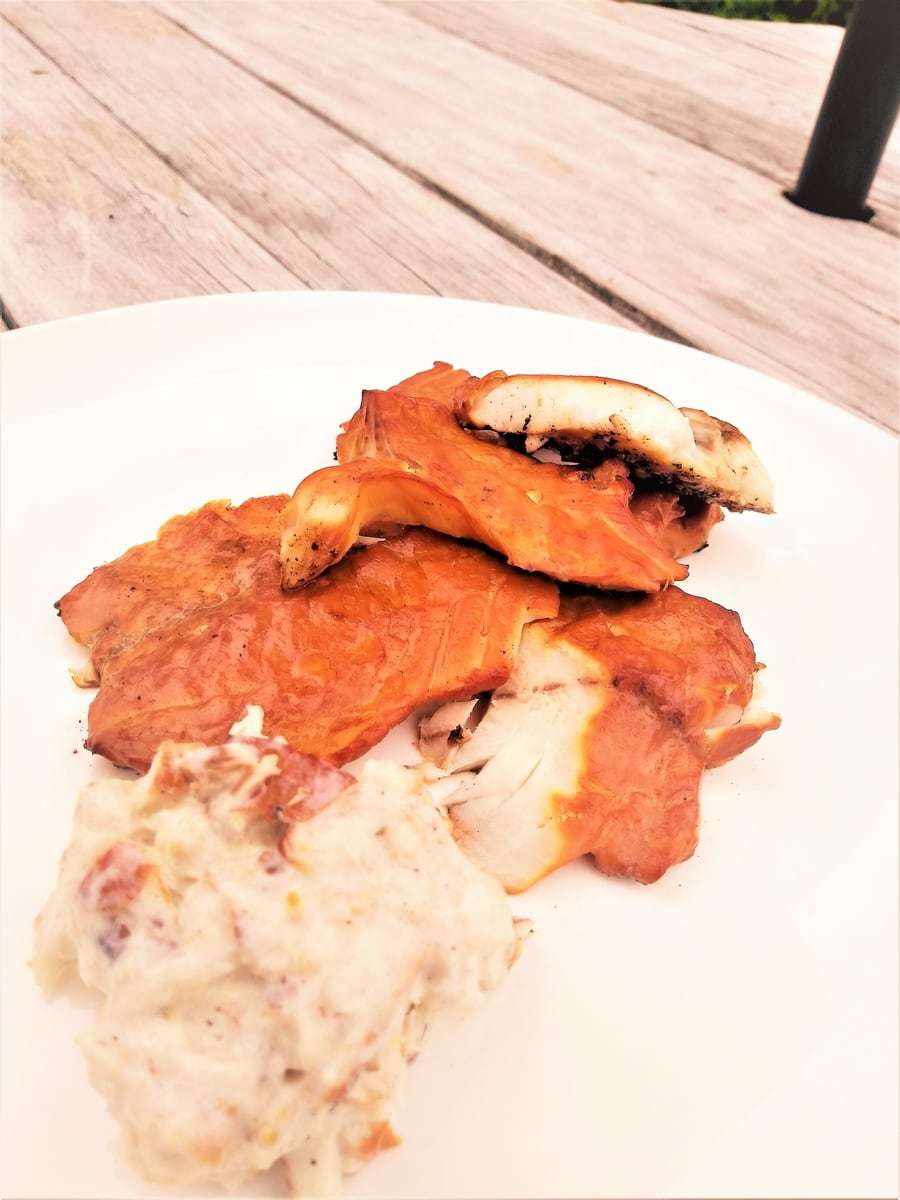
If you can form a pellicle on the meat, you will have more smoke flavor.
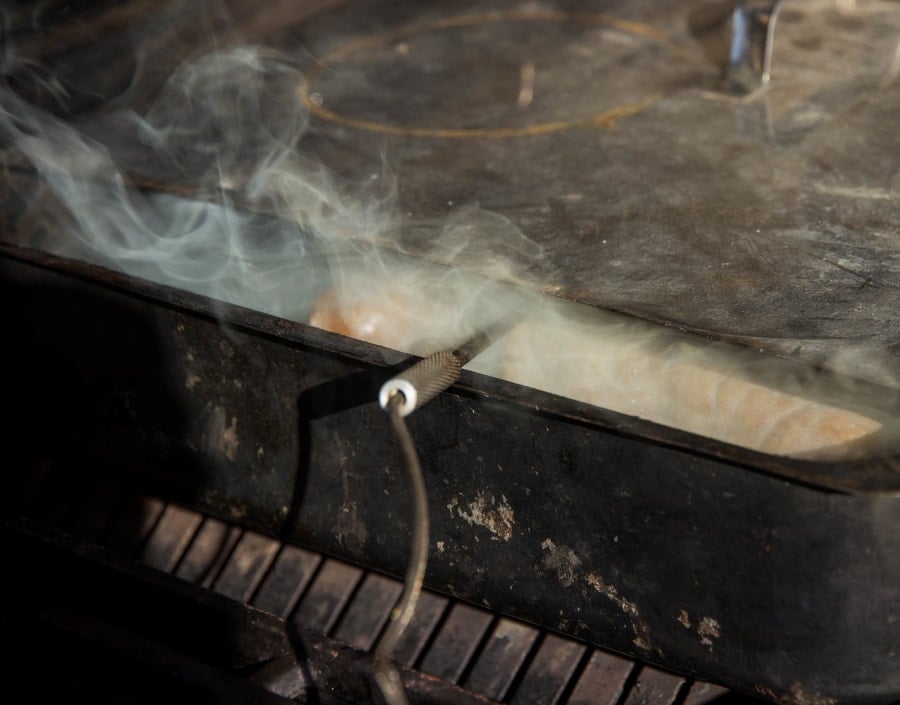
Smoked Sausage
Curing or Brining Time
None
Pellicle Formation
30 mins to 4 hours
Smoking Time
10-20 minutes to smoke sausage at 210 – 280 °F / 100 – 140 °C
Total time = 30 mins
- In a portable smoker
- On a gas grill with some smoke
- In a Smoker
Homemade or bought sausages can easily gain smoked flavor. My favorite is chorizo sausages; I use a portable smoker with direct heat from below. The portable smoker is a very small enclosure. It means the sausage is surrounded by smoke gases easily.
Placing the sausages in the fridge uncovered for 2+ hours will also dry them out and help the smoke adhere to them.
Moderate to low temperatures work very well since the volume of the sausage is not very dense.
I have no problem cutting a test sausage in half to see if it is cooked. Generally, I will give myself the test sausage to have a look and make sure it is cooked thoroughly.
Smoked Pork Chop
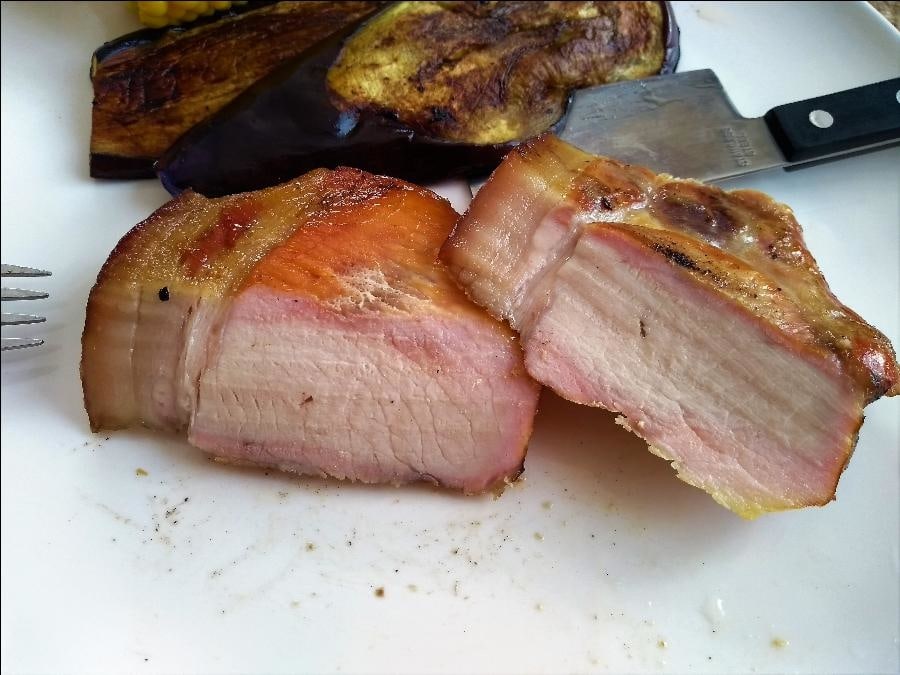
Being a dense meat, the process will take longer, generally under 2 hours.
A smoke ring is just a cold bit of meat that gets some smoke at a lower temperature to start, a reaction happens on the inside of the meat, it doesn’t change the flavor. It just looks nice.
An indirect heat source is better here because you want the smoking and cooking to take an hour to two.
Curing or brining will help the smoke adhere better to the meat. This can be done relatively quickly and won’t take an entire day.
Some simple spices can be added with the salt. For instance, I use:
- Dry or Fresh Thyme
- Dry or Fresh Garlic
- Chilli Powder
- Onion Powder
Curing or Brining Time
1-2 hours
5% salt brine = 5 grams salt to 1 quart/1 liter of water
Dissolve and submerge
Pellicle Formation
1-2 hours
Smoking Time
1-2 hours for Pork chops at 210-250°F / 100-120°C
Total Time = 3 – 6 hours
Cutting the chop in half will show you if it’s ready. Alternative thermometers are an option. Here are some suggestions for easy basic options or more advanced ones. If you’re looking at thermometers, here are a couple I like.
Smoked Fish Fillets
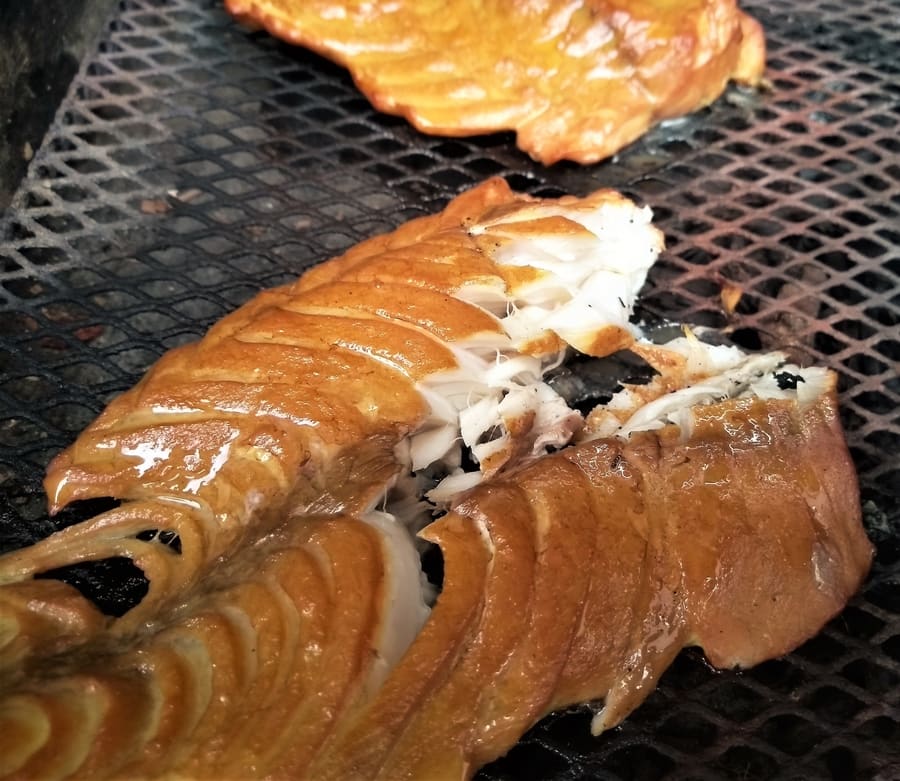
Again, I use a portable smoker for the small enclosure benefits. The portable smoker will sit on the propane grill burner with one burner on low.
Salmon & trout are great options. The oily type of fish works well in a smoker. Fattier fish absorb smoke better; remember, the fat is healthy, also.
I like inserting a temperature probe into the portable smoker to ensure I smoke at 210 – 250°F/ 100 -120°C. Here are a range of temperature probes I like. Some are super simple, and my reviews are based on functionality and quality. Temperature probes aren’t essential but help create a more consistent outcome. Temperature control is more important than most other factors.
Curing or Brining Time
15 mins to 8 hours (overnight)
Pellicle Formation
1 to 4 hours
Smoking Time
15 to 30 mins for smoked fish at 210 – 250 °F / 100 -120 °C
Total Time = 15 mins to 12 hours
If it flakes easily when pressed with a fork, it’s cooked. Because it is less dense meat, this happens a lot faster than most people think.
Tea Wok Smoked Fish
Tea and smoked fish are another option. You can do this carefully in a kitchen, but there is a chance that the smoke alarm will go off.
You can do it in the backyard or on a patio. This is a subtle smoking technique that can work well. Here is the full post I wrote.
Smoked Beef Cut or Steak
This is similar to the pork chop smoking method that I use. Again, this is dense meat, so it cooks for an equal length of time.
My preference is an essential seasoning of salt & pepper.
The weight and thickness of the meat can vary greatly depending on the butcher or the cut, which will dictate the length of time.
Use a 1-2 inch thick steak cut for an easy option.
The boneless steak will make this more accessible; it can also work with a bone.
Generally, I use the guide for every 1.5 lb of meat, an hour of indirect heat smoking at approximately 230 °F / 110 °C.
If I am in a rush, I quickly cure the meat to hold moisture. The rule is 1/2 teaspoon of salt to each pound of meat. Give the meat 30-60 mins and then grill + smoke.
If you want ideas for smoking on a gas grill, please find a post here.
Curing or Brining time
4 hours to overnight
Pellicle Formation 2 to 4 hours
Smoking Time
1 to 2 hours for smoked beef steak (depending on volume) at 210
250°F / 100 – 120 °C.
Total Time = 7 hours to 16 hours
I have noticed that when the meat starts to show blood/moisture on the surface, it will be over medium cooked often. You can use this to indicate how cooked through the meat is.
Turkey Breast
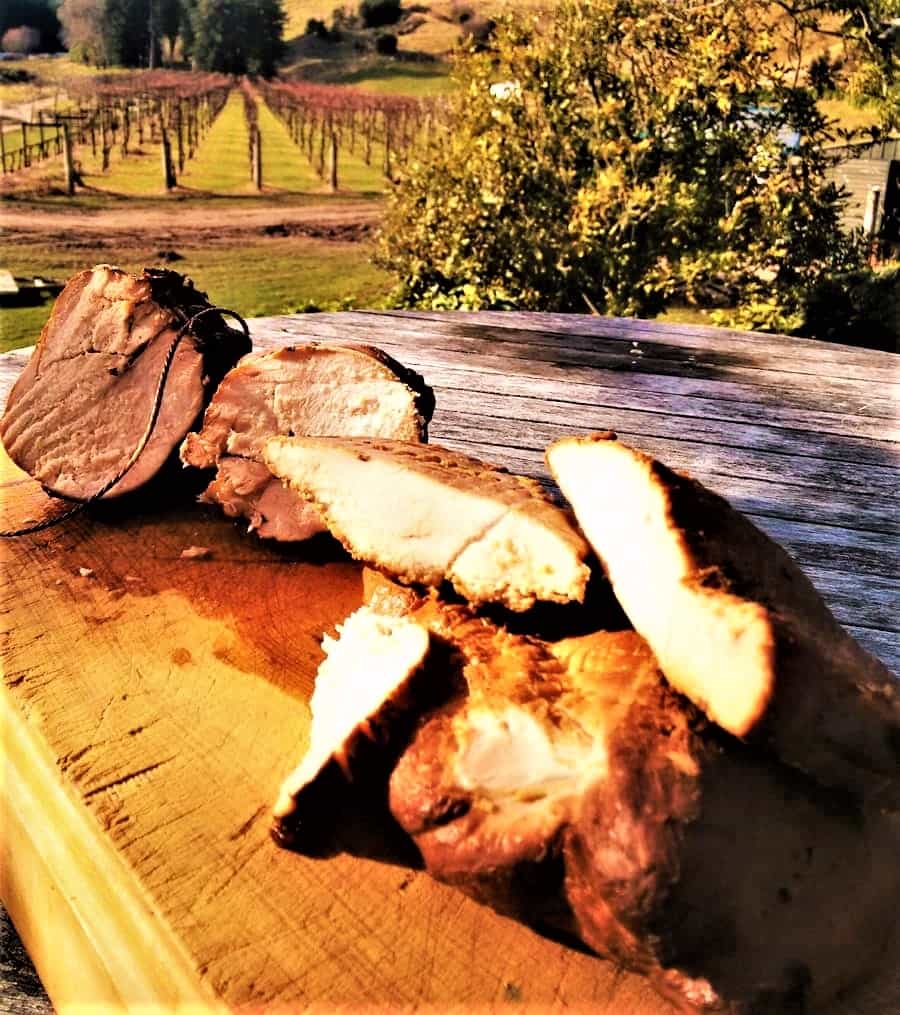
Farmed or wild turkey can vary considerably in both fat content and size.
I have found that wild turkey breasts that have been overnight salt brined with white wine, fresh bay leaf soft, hard herbs, and garlic will take 20-30 minutes to hot smoke at a moderately high temperature. Farmed will suit the same method from my experience.
A portable smoker works well over a gas/propane burner or BBQ. This does lead to a more subtle smokey flavor. The juicy meat is retained due to the brine, especially with wild turkey.
Brining works better because it is a larger piece of meat than salt rub curing.
My experience has been making a stew or soup out of turkey thigh; Mexican spice concoctions work well. If I am dealing with a whole wild turkey, it can also be roasted carefully (it does not fall into the easy category).
Brining Time
6 hours to overnight
Pellicle Formation
1 to 6 hours
Smoking Time
3 to 8 hours for turkey breast (depending on volume & temperature) at 210 °F / 100 °C to 280 °F / 140 °C
Total Time
7 hours to 16 hours
Due to many people undercooking poultry, an essential thermometer can help make testing easier.
Chicken Breast or Thigh
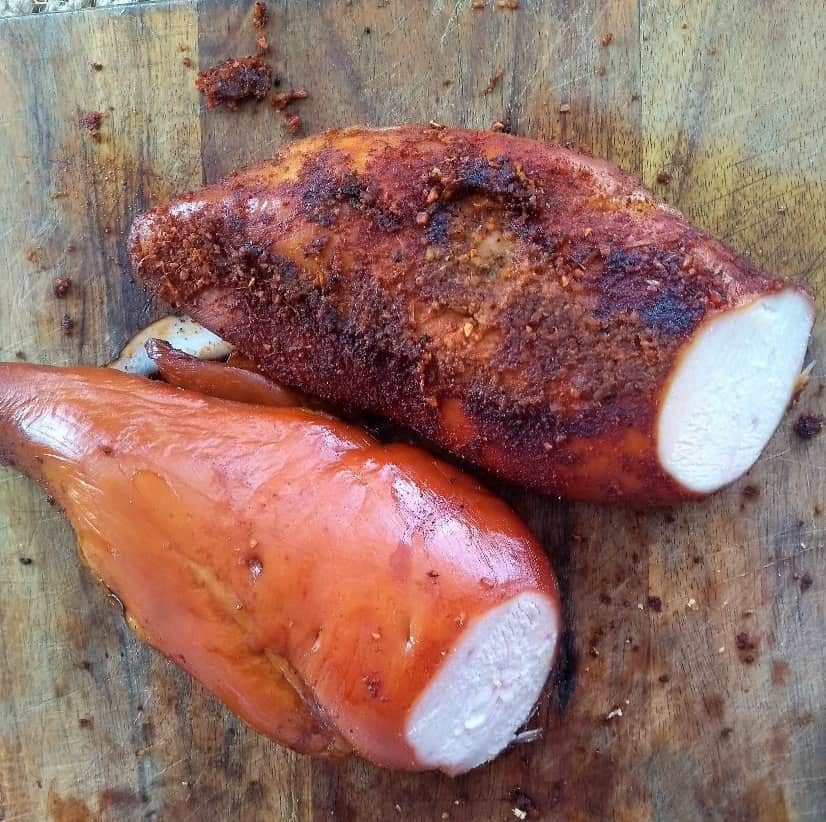
Being smaller than a turkey, the chicken meat will cook much quicker. The easiest way I have found is to overnight brine with a simple ratio of 30 grams per cup of water. Then, it will dry out and form a pellicle, and it will be ready for smoking.
Brining or Curing Time
3 hours to overnight
Pellicle Formation
1 to 3 hours
Smoking Time
1 to 2 hours for smoked chicken breast (depending on volume) at 210-280 °F / 100 -140 °C
Total Time
5 hours to 13 hours
Easy Smokers to Use for Easy Meat
- Smoke Generator
- Pellet grill smoker
- Electric smoker
- Gas smoker
- Gravity-fed smoker
- Portable Smoker
This list gives a quick indication; I have come to this conclusion from what I have learned over the decades for many reasons. If you want a complete breakdown, I wrote a whole post; please find it here.
Easy Woods to Learn about BBQ Smoking
Light and subtler hardwoods are the best for the beginner. They are easier to use because over-smoking is harder. Applewood and many kinds of fruit wood are ideally sweet & subtle woods. I wrote a post on Universal Woods for smoking here for more information.
Smoking Wood Sizes – Chunks, Chips, Pellets, Sawdust
Tip –Soaking wood seems somewhat controversial; the soaking doesn’t seem to penetrate much of the more significant wood types. It seems to delay the smoke from combustion. Therefore, I do not soak the wood for smoking (here is an article I wrote about pairing woods to flavor) .
From largest to smallest wood dimensions, here is a brief overview to help make it easy for you. If you want an easy guide on universal woods for smoking, please find it here.
Chunks
Wood chunks are generally 2 or 3 inches square and predominately used with charcoal smokers. Friends use these directly on a BBQ burner, placed on the flame guards (flame tamers/vaporizers), which can create some added smoke under the BBQ hood.
Chips
Wood Chips are a good option if you smoke for 1-3 hours. They will provide a decent level of smoke flavor.
Pellets
They tend to burn relatively fast, which can be better for the more accessible, shorter smoking times of the above options.
They come in various flavors; I am working through a massive bag of apple wood. It works for many of my different (I wrote an article on the easiest smokers to use here).
Tip – Pellets are compressed wood, so they do not need soaking.
Wood Saw Dust
I use this predominantly for my portable smoker; it’s fast to start. It works best for fish fillets.
It is ideal for a quick camping and fishing smoker.
If you want more information on portable smokers, I have written why they are helpful here.
How To Keep Smoked Meat Moist
Apart from sausage smoking, the curing and brining process will help maintain the moisture in the meat you smoke. This is especially important for wild meat since it is generally always lean.
Famous BBQ Smoking – Brisket, Ribs & Pork Butt
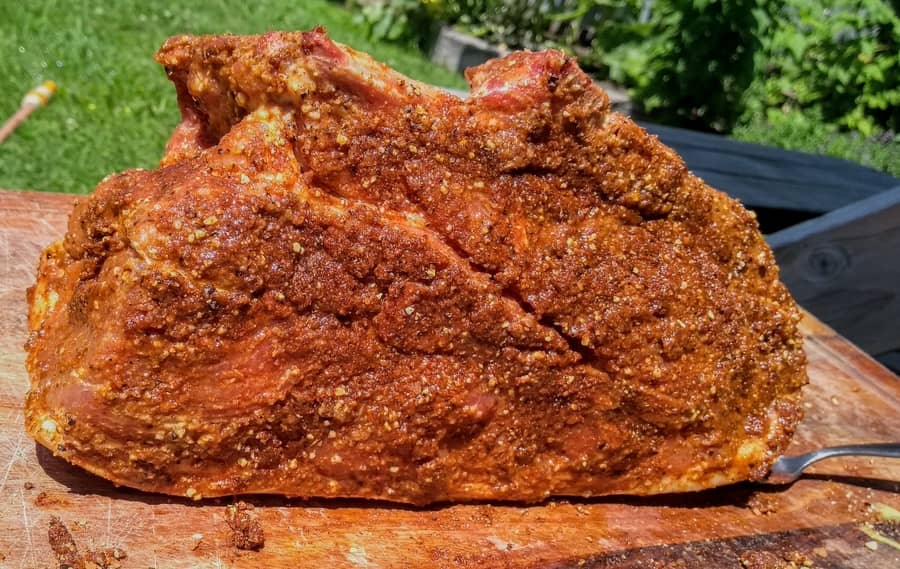
The popularity of Low & Slow has made this style both fascinating, competitive, and opinionated.
There are so many followers and passionate enthusiasts everyone has a different perspective. This is akin to the thousands of variations that salumi has across Italy. Italy has done this since Roman times.
It’s hot smoking at low temperatures, introduced by the German & Czech settlers initially. It has morphed and developed a lot over time.
My view is pulled meat simmered with smoke flavor added. The charcoal setup is the process that is most involved. You are managing an open (closed) fire with airflow control.
Easy Short Smoking Session to Learn How Your Smoker Works
Regardless of what you are using to produce smoke while cooking, there is always a learning curve. One aspect is getting the wood burning cleanly. This is called the thin blue smoke, sometimes a different color.
It’s transparent-looking smoke that disappears after a few seconds, not the bellowing white smoke that occurs when you start an outdoor fire.
It also has a pleasant smell, sometimes even slightly sweet.
Easy Portable Smoker for Camping or BBQ Grill
It’s a basic smoker, a portable smoker. It does seem to make preparation and smoking simple. For more information on why I love portable smokers, click here.
Smoking is all about slowing the cooking so the smoke has time to flavor the food.
How Do I Know When Meat is Cooked from Smoking?
The same principles of cooking meat without smoking apply. To make it easier, I have included the USDA government-recommended internal meat temperatures in the post above.
Generally, the internal temperature of any poultry meat should be over 165 °F / 74 °C.
Depending on how well you want beef/pork cooked, the USDA minimum is 145 °F / 63 °C.
Also, depending on the smoking time, beef or pork may show some pink color; this does not mean it is uncooked as long as the internal target temperatures have been reached.
The above temperatures are from:
United States Department of Agriculture, Food Safety and Inspection Service, Smoking Meat and Poultry

Tom Mueller
For decades, immersed in studying, working, learning, and teaching the craft of meat curing, sharing the passion and showcasing the world of charcuterie and smoked meat. Read More
